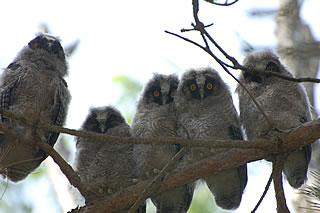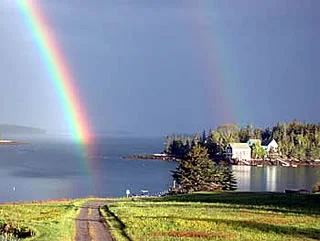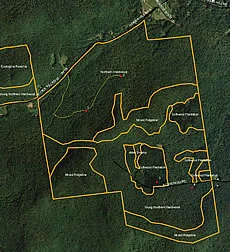by Carl Runge
In the spring of 2009 the residents of the Golf Links neighborhood in Williston witnessed a most unusual event, the successful rearing of a family of Long-eared Owls. On June 4, Corey Forrest of Tamarack Drive heard a strange sound in his yard. A diligent search revealed five squeaking owlets at the edge of an old squirrel’s nest in a pine tree behind his house and a silent adult in a maple tree nearby. When Corey’s wife Shelly noticed that the adult had prominent ear tufts, she went to the internet to identify her new neighbors. While the adult had some resemblance to a Great Horned Owl, the babies’ squeaks were more compatible with Long-eared Owlets. When Shelly took a closer look at one of the adults, she noted a medium-sized, slender owl with long ear tufts, and a tell-tale bark-like pattern on its breast, very different from the barred pattern of a Great Horned Owl. The babies also had a prominent white streak from forehead to beak, characteristic of Long-eared Owlets. Sure enough. This was a family of Long-eared Owls.
Within a few days of their discovery the fledglings were seen hopping from branch to branch near the nest. By June 13 the youngsters were all capable of independent flight and could be seen landing on the Forrests’ backyard swing set. As the weeks went by the five young owls ventured farther afield under the watchful eye of their parents, always in the evening, returning to their pine thicket to rest during the day. By early July we could hear the young ones during the night hunting in the fields behind the neighborhood. They became harder to find during the day, the best neighborhood spotter being the Forrests’ young son Evan. After July 10 we no longer saw the young owls. They had presumably moved on to better hunting grounds, hopefully at the Catamount Outdoor Family Center just to the east. While they were in the neighborhood, the Forrests were kind enough to show the owls to many neighbors and birders.
Baby Long Eared Owls
Long-eared Owls are widely distributed across North America but are rarely seen in our area. Data from the Records of Vermont Birds from 1973-83 and the first Vermont Breeding Bird Atlas Project from 1976-81 disclosed only 15 adult Long-eared Owls and only three breeding confirmations, in Sudbury, Waltham and Brandon. The second Atlas Project from 2003-07 noted only one breeding confirmation in Charlotte, two probable breeding pairs in Vergennes and Snake Mountain, and three other observations in the Champlain Islands and Northeast Kingdom.
Their preferred nesting habitat is thick coniferous forests. The owls are secretive and strictly nocturnal in activity. Their long slender wings and graceful bodies allow silent and stealthy hunting for primarily small mammals over open fields at night. Bird experts suspect that Long-eared Owls are more common than observed owing to their secretive habits. By nesting so close to humanity, our Williston owls seem to be an exception to the usual pattern. They were very watchful, but unafraid, of the human, canine, and auto traffic that swirled around their home. We hope that this owl family will exhibit site fidelity and return to nest in future years. In the meantime we will be on the lookout for our new friends at the Catamount Family Center.
The GMAS is very grateful to Shelly Forrest for sharing these magnificent photographs of her owl neighbors.










